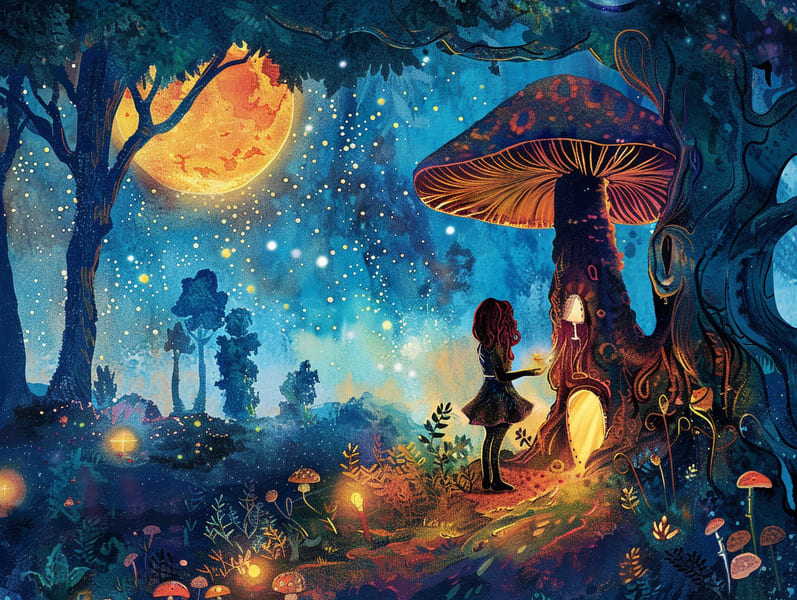The Start of Legendary Fairy Tales with Its Immortal Mystique.
The Start of Legendary Fairy Tales with Its Immortal Mystique.
Blog Article

Historical fairy tales have old origins. These tales have been conveyed from one generation to the next well before they were ever inscribed. They developed from a variety of backgrounds, including African traditions. They were initially told among grown-ups, often carrying themes and messages aligned with the societal norms and beliefs of the time.
The renowned Brothers Grimm, Jacob and Wilhelm Grimm, were among the first to collect many of these beloved narratives. Their anthology, "Grimm's Fairy Tales," included tales like "Cinder Maid," "Little Brother and Little Sister," and "Schneewittchen," which have since become staples in the world of children's fairy tales. Similarly, the Danish author's charming tales, such as "The Story of the Little Mermaid," and "The Duckling that Could," have won hearts worldwide, establishing their place in the pantheon of famous fairy tales.
Despite their ancient origins, classic fairy tales remain as significant as ever, especially as children's bedtime stories. These enchanting tales are now available in different formats, including beautifully illustrated books, delightful animations, and web-based fairy tales.
Their persistent charm can be connected to several enchanting factors:
Important Morals: Traditional fairy tales often whisper important moral lessons. Narratives like "The Story of the Boy Who Cried Wolf" teach the significance of honesty, while "The Race of the Tortoise and the Hare" emphasize the merits of perseverance and unassuming nature. These narratives offer the young clear distinctions between right and wrong, shaping their moral compass in a soft yet significant way.
Sympathy and Perception: Old fairy tales frequently showcase beings facing trials and tribulations, encouraging readers to comprehend with their struggles and support their triumphs. For instance, "Beauty and Her Beast" shows us the necessity of seeing beyond looks to appreciate the inner spirit of a character, nurturing compassion and discernment.
Cultural Recognition: Many classic fairy tales are interwoven with the cultural contexts from which they grew. Reading these stories can provide informative snapshots into different traditions, promoting a sense of cultural respect and understanding.
Fantasy and Innovation: The fantastical elements in traditional fairy tales—mythical creatures—enliven children’s fantasies. These tales move readers to supernatural realms, promoting creative dreams and a sense of wonder that lasts a lifetime.
Timeless fairy tales are not only mesmerizing but also instructive. They provide fascinating tools in strengthening various cognitive and affective skills in young ones. When timeless fairy tales are read aloud, they advance language acquisition by bringing new word meanings and detailed sentence structures. This practice also fosters listening skills and attention, as young ones stay focused, eager to see what happens next.
Furthermore, debating the themes and characters of timeless fairy tales can promote reasoning skills and problem-solving abilities. Young readers are led to find patterns, anticipate outcomes, and get cause and effect. These examinations also ease little ones voice their thoughts and feelings, strengthening their emotional intelligence.
In today’s electronic age, the proliferation of free fairy tales online has made these tales more accessible than ever. Digital sites and apps extend large libraries of old fairy tales that can be read or heard anytime, anywhere. Fairy tales spoken are particularly liked, giving an immersive method for young ones to savor these charming tales. Sound books and read-to-me videos move characters and settings to life, often joined by captivating musical scores and background music that improve the storytelling journey.
The unfading fascination of old fairy tales lies in their ability to adjust to modern times while keeping hold of their main lessons. Contemporary modernizations of these stories often feature more different protagonists and modern settings, making them relatable to today’s audience. However, the essential messages of valor, goodness, and even-handedness remain unchanged, continuing to appeal to listeners of all ages.
Traditional fairy tales also offer a sense of ease and knowability. They extend a orderly narrative with a transparent beginning, middle, and end, often ending with the wrap-up of conflicts and the triumph of virtue over wickedness. This consistency can be heartening for young readers, affording a sense of sturdiness in an shifting world.
Classic fairy tales continue to charm and train new generations, maintaining their mystique and relevance in modern society. As nighttime stories for kids, they grant a perfect blend of wonder and wisdom, facilitating moral values, empathy, and creativity. The prevalence of read more online fairy tales and the prevalence of fairy tales narrated secure that these classic stories remain attainable to new generations.
By conserving and imparting these narratives, we continue to revere the rich tapestry of narrative artistry and cultural heritage. Whether you are discovering a gorgeously illustrated book, accessing a virtual collection, or hearing an narrated book, the mystique of traditional fairy tales is always within reach. These fairy tales remind us of the consistent influence of narratives and its ability to bring us together across epochs and places.
Even if you are seeing a colorful picture book, viewing a cyber library, or hearing an audio story, the loveliness of famous fairy tales is always within reach.
These narratives illustrate of the immortal force of narratives and its ability to bind us across generations and cultures, forming a connection that captivates and teaches alike.